Here’s the officially reported coronavirus death toll through May 6. The raw data from Johns Hopkins is here.
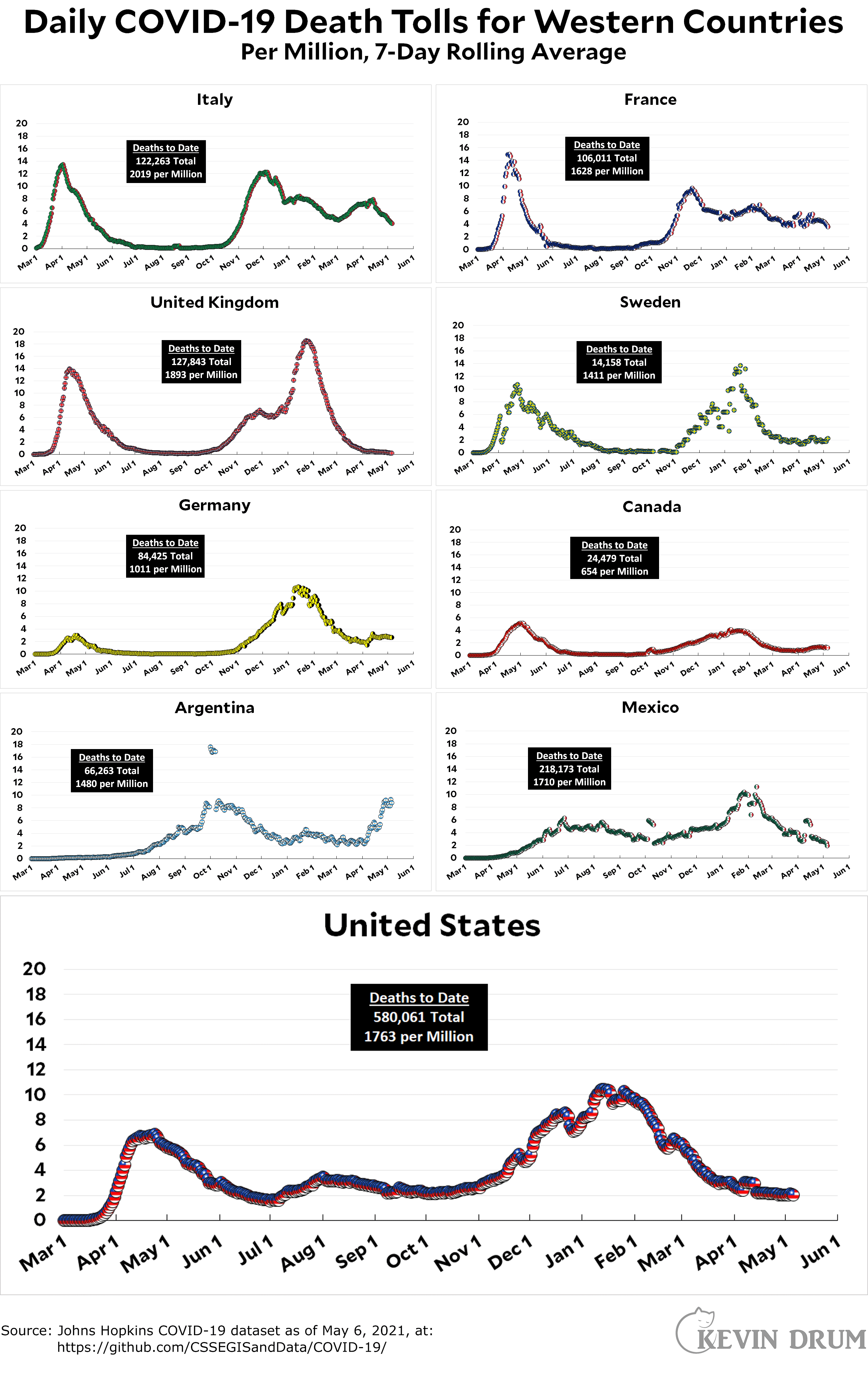
Cats, charts, and politics

Here’s the officially reported coronavirus death toll through May 6. The raw data from Johns Hopkins is here.

As we all know, the American right has become obsessed with "critical race theory" and the danger it presents if it's taught to schoolchildren. It seems likely that most conservatives don't really understand what CRT is, but I think it's pointless to carp about that. What's more important is to understand what they object to, regardless of what it's called, and then respond to that. So here's a brief summary of the main things that I think conservatives mean when they denounce "critical race theory":
I don't have great hopes of getting high-quality responses to this, especially since what I really want are conservative responses, but I want to throw this out anyway. Is it a reasonable summary of what conservatives are talking about when they say "critical race theory"? Is anything important left out?
Over at National Review, Isaac Schorr has apparently taken on the task of getting us all to take Caitlin Jenner seriously. It's a nice try, Isaac, but I decline to take the bait. Instead, I'll highlight only this:
With more than 160,000 homeless, California paces the nation, and it’s not particularly close. Worse, that number is on an upward trajectory.
I'm not quite sure what the point is here. That Jenner is bravely speaking truths about the homeless that no one else will take on? Believe me, you can't swing a dead cat in the state of California without hearing or reading half a dozen takes on homelessness, which we all know is caused by the state's general unwillingness to build new housing. There are no big secrets here.
But is it even true that California "paces the nation" in homelessness? Surprisingly, the answer is no. At the very least you need to take each state's population into account, and when you do that California comes in at #4:
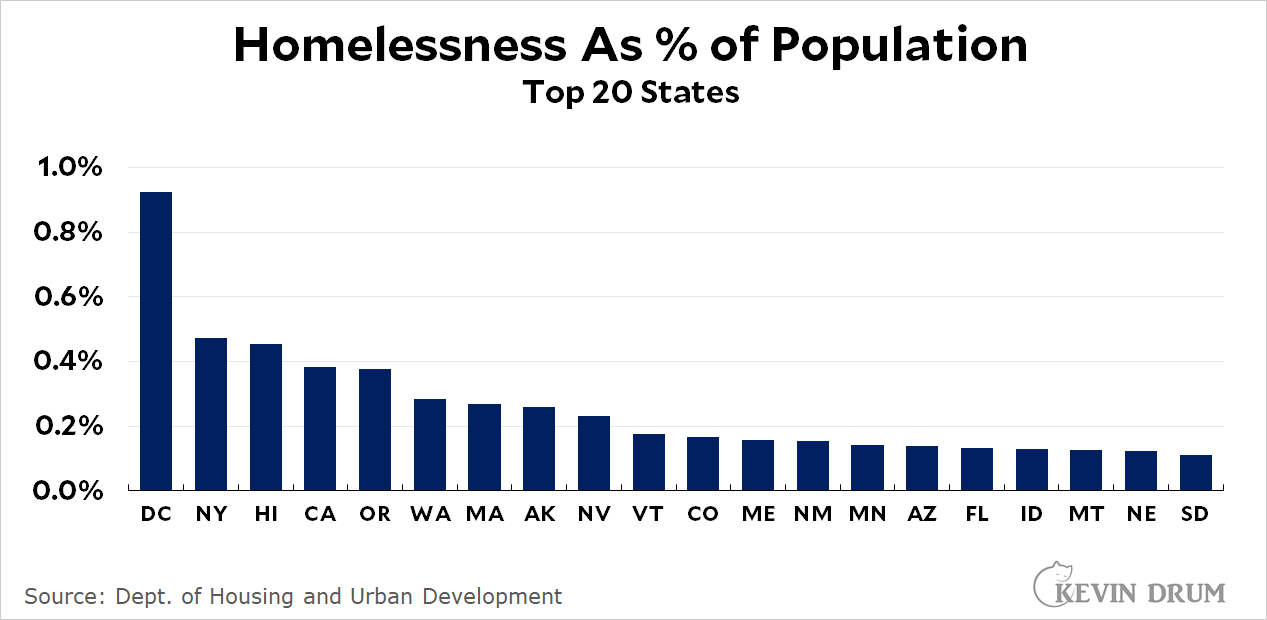
This is nothing to be proud of, but it's not the highest in the nation. OK?
UPDATE: The original version of this chart was off by a factor of ten. Sorry about that. It's correct now.
Let's end up the week with a perfect little pink rose. It's a Cecil Bruner, one of the commonest varieties, but no less lovely for all of that.

California Gov. Gavin Newsom has announced a plan to ban new fracking permits by 2024 and end all oil production by 2045. That all sounds good, but there's less here than meets the eye.
We had a brief fracking frenzy a few years ago over the newly discovered Monterey Shale Formation, but it eventually turned out to be a little less lucrative than everyone thought at first. It currently accounts for only about 2% of California's total oil production.
Still, it's good to put an end to it before it grows any larger. At the same time, it's just one piece of a California oil picture that looks like this:

At the current rate of extraction, California's oil reserves will be nearly entirely gone by 2045 no matter what Newsom does. Ditto for oil production:
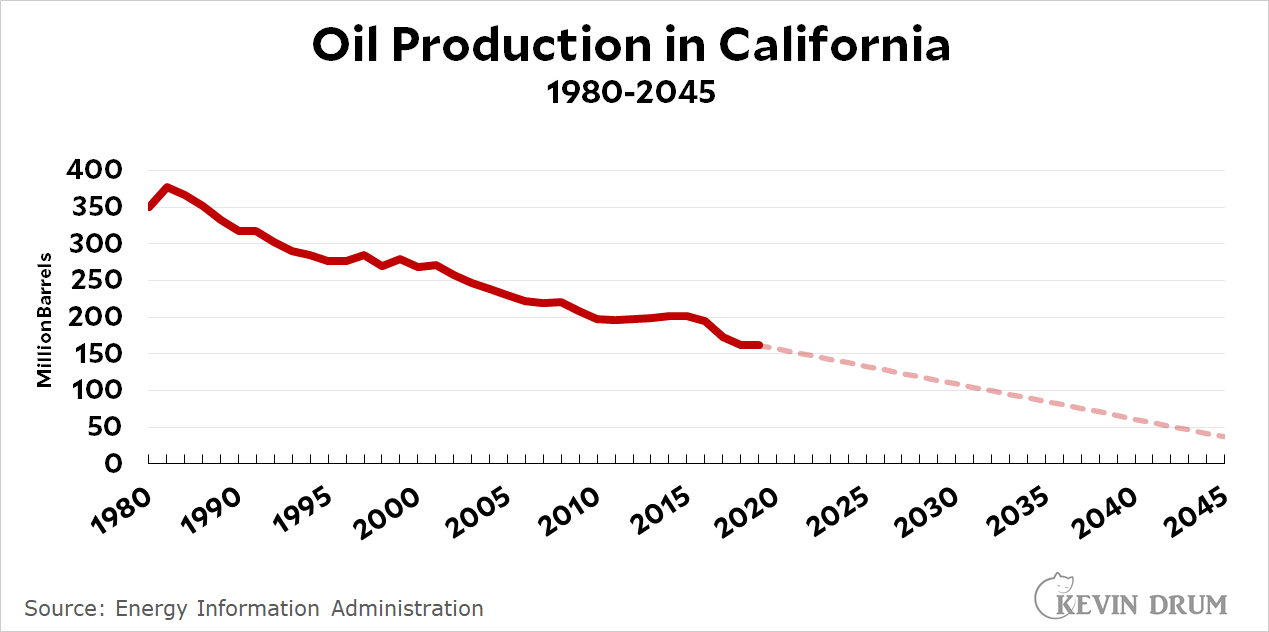
Newsom's decision is welcome, but he's really not asking anyone to keep any oil in the ground. The plan is basically to allow all the oil to be extracted and then to ban further extraction when there's none left anyway. The bans are a good idea, but don't get the idea that they're game changers. They aren't.
The US death rate from COVID-19 has been stubbornly stuck at about 700 per day for the past few weeks, but our confirmed case count began to fall in absolute terms in mid-April. This should mean that our death rate will begin to drop soon. We'll see.
Here’s the officially reported coronavirus death toll through May 5. The raw data from Johns Hopkins is here.
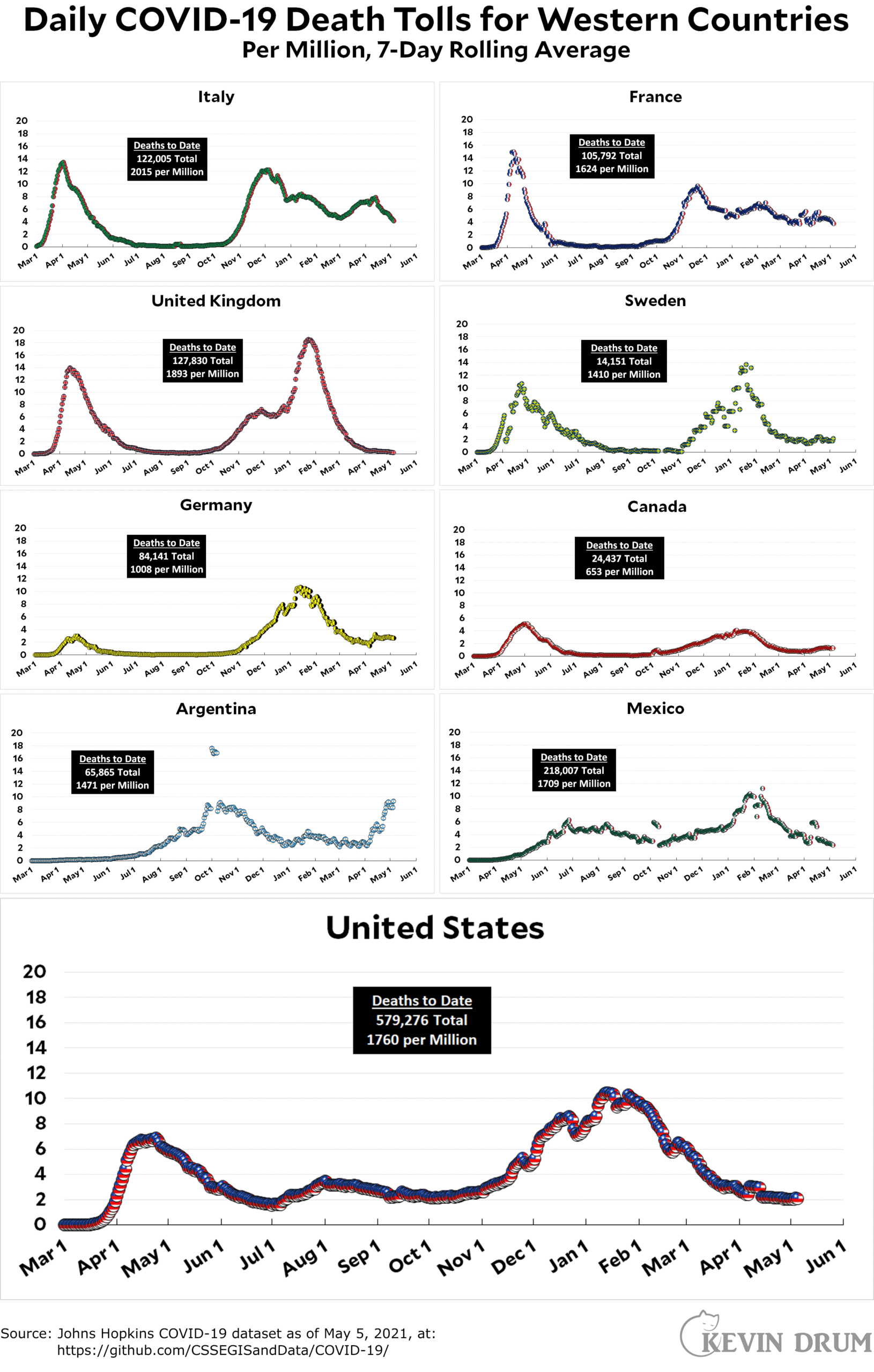
President Biden has decided to support the idea of suspending patent protections on COVID-19 vaccines, a move that's intended to make it easier for poor countries to legally manufacture vaccines for themselves. Hooray for Biden?
I'm not so sure. As near as I can tell, this is something of a meaningless gesture. Many of the patents involved in manufacturing the vaccines don't belong to Pfizer/Moderna/etc. in the first place. They're licensed from various other sources. Nor are patents really the biggest stumbling block for poor countries that want quicker access to vaccines. It's manufacturing know-how and shortage of raw materials. And anyway, these countries already have legal remedies available that allow them to force pharmaceutical companies to license generic versions of their drugs at low cost.
Beyond this, if the US really wants to make vaccines more available to poor countries, the solution is easy: spend lots of money. How much would it cost to purchase, say, 10 billion doses of vaccine? $50 billion? $100 billion? This is not a huge sum of money by American standards. And it would be even less if we split the cost with Europe. This is more or less the goal of Covax, the global initiative aimed at equitable access to COVID-19 vaccines, which has so far been a dismal failure.
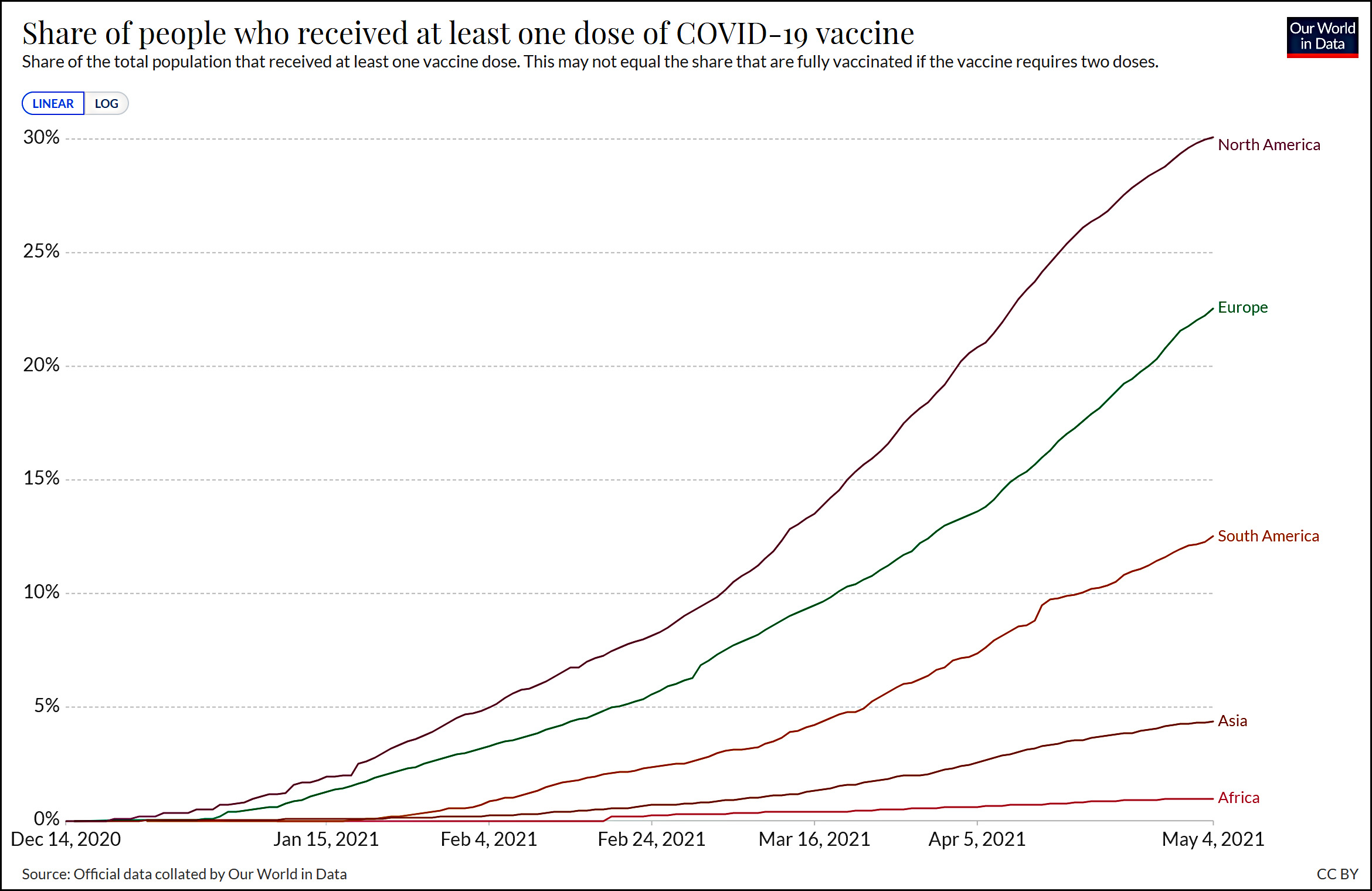
At the risk of sounding a little too cynical, I think Biden's patent announcement represents something of a bad habit. He's done a lot of things to appease the progressive wing of the Democratic Party, but many of those things are more symbolic than real. Sometimes that's because they're unlikely to ever become law; sometimes it's because they simply don't have a big effect; and other times it's because he can give in at a pretty low cost.
Politically, this is a savvy strategy, and it often has no real downside. But this time it might. The real answer to global vaccine coverage is money, and lots of handwaving about patents does nothing but obscure that.
Here's a rare picture of the sun and the moon sharing space in a single image. But where was it taken? Steve is exempted from this contest.
ANSWER: The building is Millikan Library at Caltech. At least, it is for now. It will soon be renamed thanks to Millikan's support of eugenics back in the day. A few other buildings are also due to be renamed, including my old dorm, Ruddock House.

It is natural that Democrats trust the government more when a Democrat is president while Republicans trust government more when a Republican is president. However, a new study confirms something we've seen before: Republicans are far more partisan than Democrats. Here's the basic chart, helpfully colorized by me:
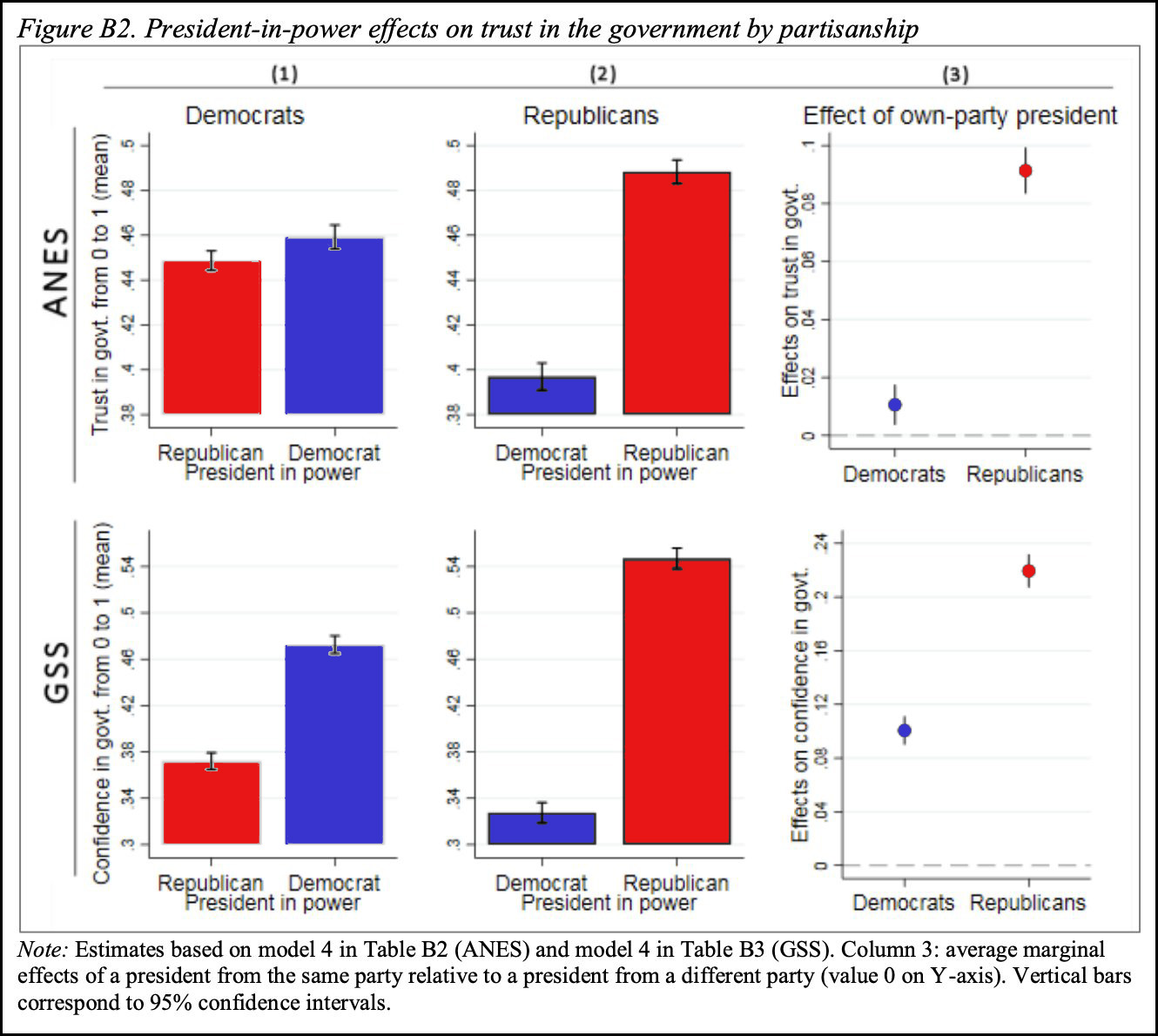
This partisan difference among Republicans became even larger starting in the Bush era:
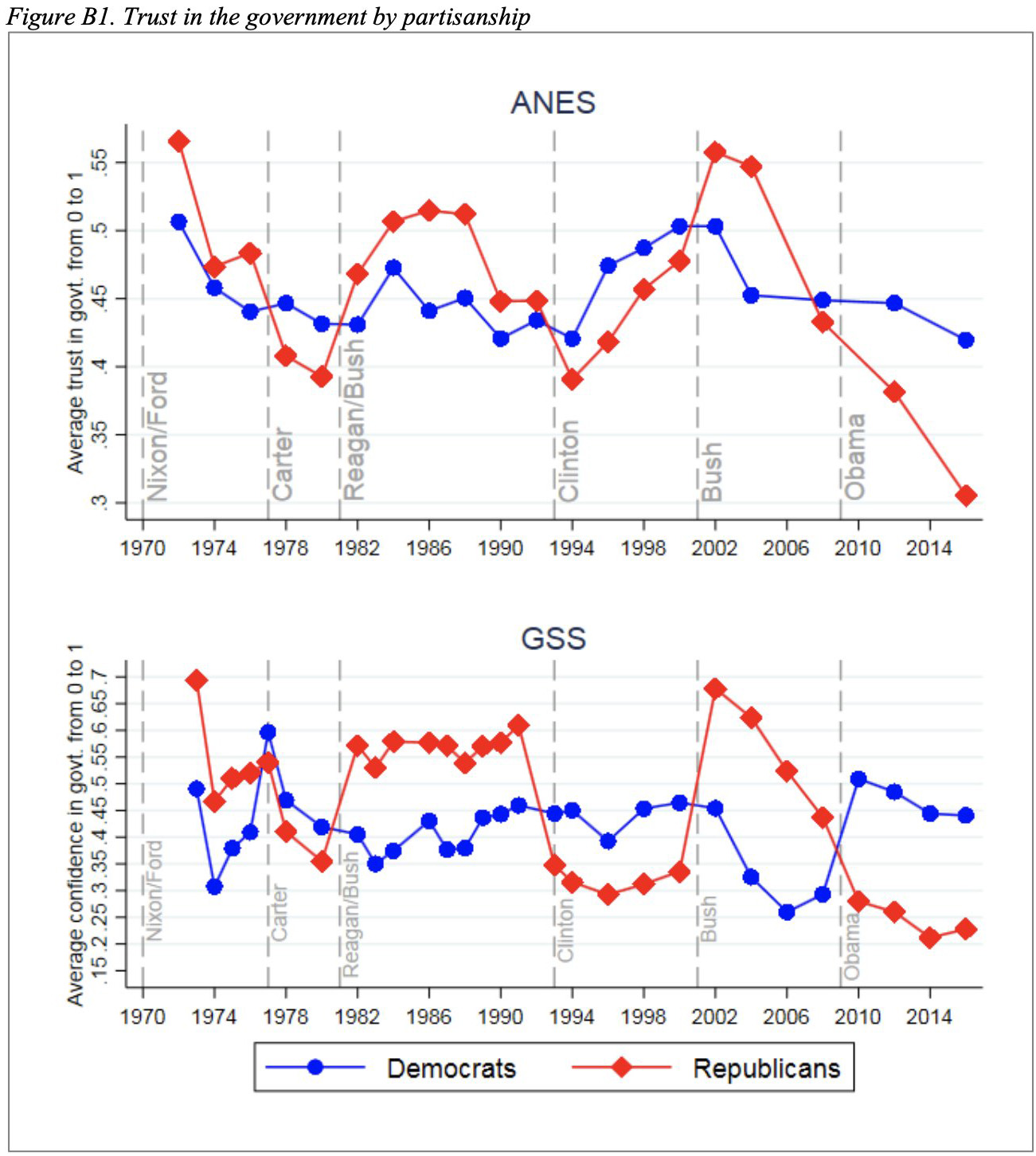
This is yet another demonstration of the malignant effect of Fox News. Before 2000, Republicans were somewhat more partisan than Democrats in their trust of government. After 2000 they went absolutely bonkers. This is what Rupert Murdoch has done to us.
Here's a chart from the Kaiser Family Foundation showing the vaccine performance of each state. I've drawn the ovals to show roughly where each region is clustered:
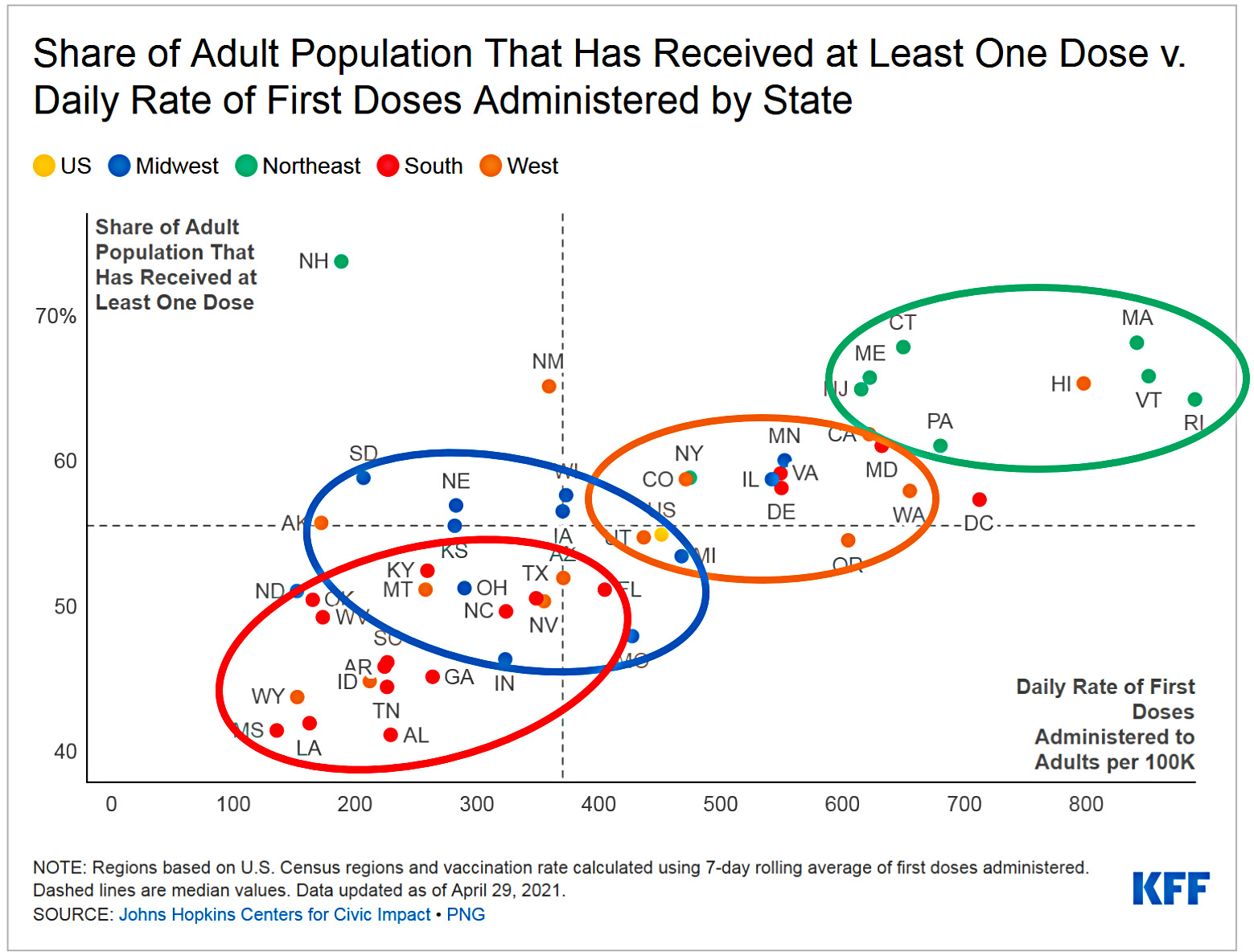
The best performance has been in the Northeast, which has vaccinated about 65% of its population. The worst is in the South, which is in the 45-50% range. The West and the Midwest are somewhere in between.